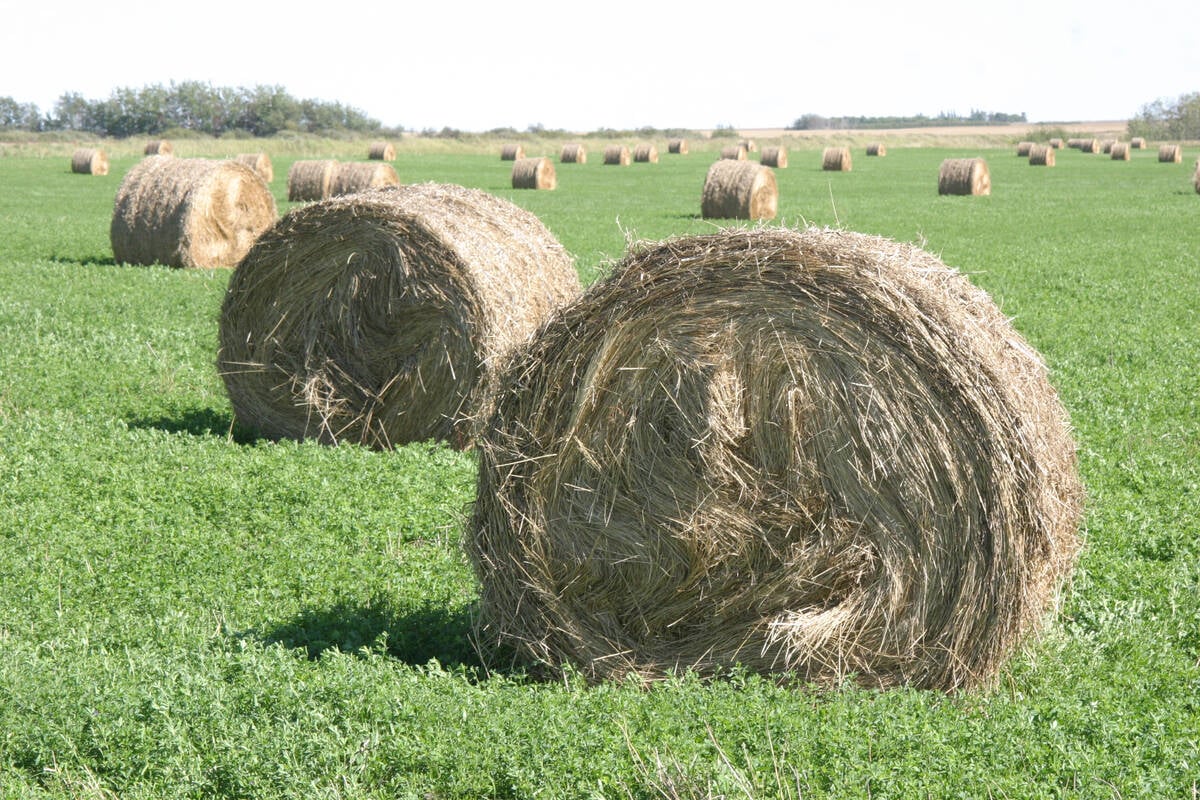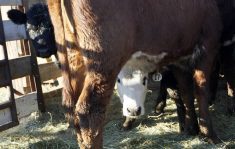D-day is drawing closer for Simon Goodwin.
“Nov. 30 is my year end. Then I’ll sit down and make a decision whether we can stay in business,” said the hog farmer from Calmar, Alta.
Goodwin is not the first to think about getting out of the pork business, which is battered by low prices, high feed costs, country-of-origin labelling restrictions and most recently, the banning of Alberta pork exports because of H1N1 influenza.
The Alberta industry has dropped to about 450 producers this year, compared to 1,500 in 2006.
Read Also

Breaking down successful winter feeding into six steps
It’s that time of year when it is important to start planning for a cow herd’s winter feeding program. Here are six steps I think are necessary to consider when getting your feed tested.
In what may be the first of many public rallies, about 2,400 people stood in line July 10 for barbecued pork sandwiches at McDougall Centre, the Alberta government’s Calgary headquarters. While they munched on a free meal during the Calgary Stampede, the public heard about an industry on the brink of collapse.
Goodwin came to Canada from Yorkshire, England, 22 years ago. The pork market tends to move through a four- to five-year cycle and he has been able to ride the ups and downs.
This time around, the normal recovery from cycle lows has not occurred and he wonders how he can keep his 500 sow farrow to finish unit going.
“We haven’t downsized and we are trying to maintain our production cycles,” Goodwin said at the rally.
He is reluctant to get rid of sows using a government reduction program because it would eliminate years of work to build up his herd.
A few years ago, feed costs were $65 per pig to feed it from birth to market finish. Now it costs $110 per pig and Goodwin is getting about $1.21 a pound. Added to that are farm costs, labour, taxes and medications.
Alberta Pork estimates the hog industry adds about $1.2 billion to the provincial economy and a single farm can add more than $3.4 million to a local economy.
Jurgen Preugschas, Alberta-based chair of the Canadian Pork Council, said his group has talked to the federal government about loans and other programs that would cost about $800 million.
He had hoped to have an announcement for this rally but that was not the case.
“Most of us are struggling to make our monthly payments to our feed suppliers, our veterinary supplies, our salaries, our wages,” he told those in the crowd. He urged them to ask for Canadian pork when they shop.
The pork plan outlines a business strategy through 2014 and was presented to the federal government last week. It calls for a smaller herd that would supply 88 percent of the domestic pork as opposed to 75 percent in 2008. There would be lower exports to the U.S.
It also asks for a special H1N1 recovery plan loan payable at $30 per market hog shipped in the first quarter of 2009. Subsequent payments would be based on previous quarters’ shipments. It would be repaid over the next 10 to 15 years.
Through a cull sow program, the national breeding herd has been reduced by about eight percent. Producers asked for another program for those who wish to leave, involving a $500 per sow payment plus market value of the animal.















